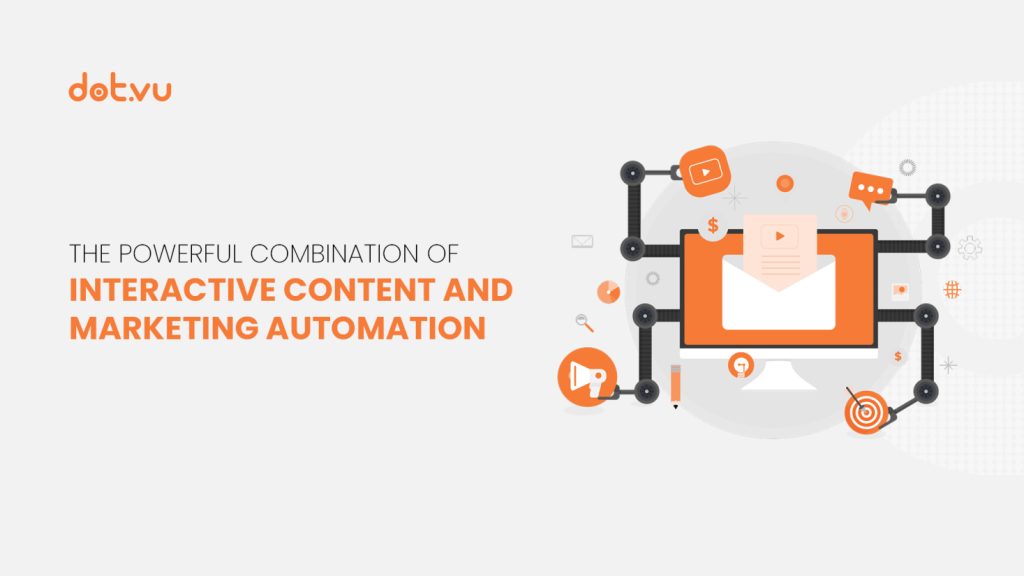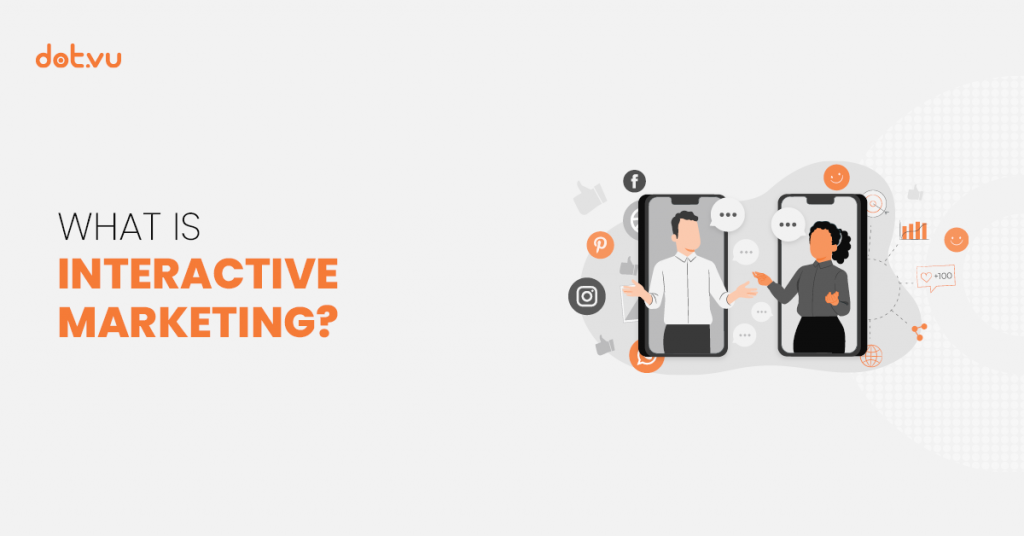
Facing the uphill battle of today’s marketing world? You’re not alone. In fact, more than 71% of marketers struggle with meeting customer expectations. Other common issues for companies include lead generation, creating engagement, and collecting user insights.
If you are looking for ways to address and solve a specific challenge in your marketing department, you are in the right place. We will give you actionable tips on how to outgrow your challenges and succeed in today’s heavy competition using Interactive Content.
Find your fix! Head to your challenge:
- Generating leads
- Differentiating my brand
- Sales and marketing alignment
- Hiring top talent
- Understanding customer behaviour
- Working with budget constraints
- Increasing website traffic
- Generating brand awareness
- Educating prospects/ buyers
- Training my marketing team
- Lack of (technical) resources
- Building a strong online presence
- Collecting data and measuring results
What is Interactive Content?
Interactive Content is online content that requires users to actively engage by clicking, answering questions, flipping eBooks, and playing games.
Interactive Content addresses marketing challenges by engaging audiences in a dynamic and participatory manner. It transcends traditional static content, inviting users to interact through quizzes, polls, Interactive Videos, and more. This engagement facilitates a deeper understanding of customer preferences and behaviors, enhances lead generation, and boosts brand differentiation.
The top 13 marketing challenges (and how to outgrow them)
1. Generating qualified leads
Lead generation is the lifeblood of marketing, yet many businesses struggle to attract and convert quality leads. Traditional methods are often hit or miss, and the digital landscape is crowded with competition. This problem is faced both by B2C and B2B marketers. Did you know nearly 70% of B2B businesses struggle with lead generation?
In this situation, content marketing can save you. Content marketing generates 3x more than traditional marketing and costs 62% less. However, the challenge of producing the right type of content formats is still here.
How to solve it?
By engaging users in a meaningful way, Interactive Content not only captures attention but also encourages active participation, making it a powerful tool for generating high-quality leads.
Consider one of the following examples:
- Interactive Quizzes with gated results. Quizzes are captivating experiences that challenge, entertain, and actively engage your audience. These quizzes deliver personalized feedback based on participant responses, making them a potent tool for social media engagement and email list expansion. By designing quizzes that intrigue users and entice them with compelling results, you encourage them to complete a brief lead form to discover their outcomes. Check out the example below – could it be something for your brand?
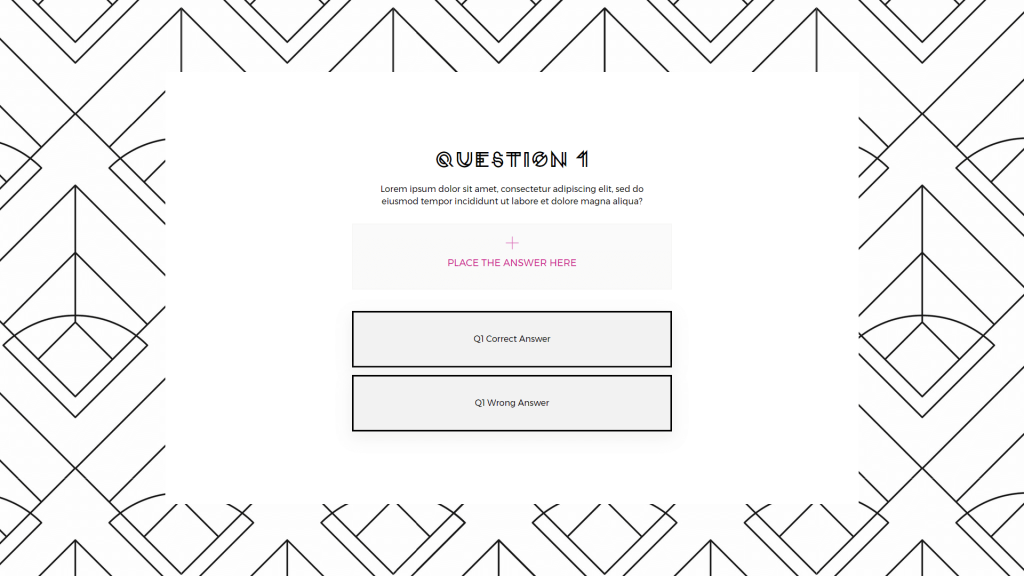
- Marketing Games. Engage visitors in a fun Marketing Game with exciting rewards like free delivery or discount codes. You can add a lead form in the beginning, or you can ask for the names and email addresses of winners to claim their prizes. The example below is a fun Marketing Game with a lead form in the beginning and exciting rewards for the winners. It is one of our free-to-use templates, so you can easily create it and get it running on your website.
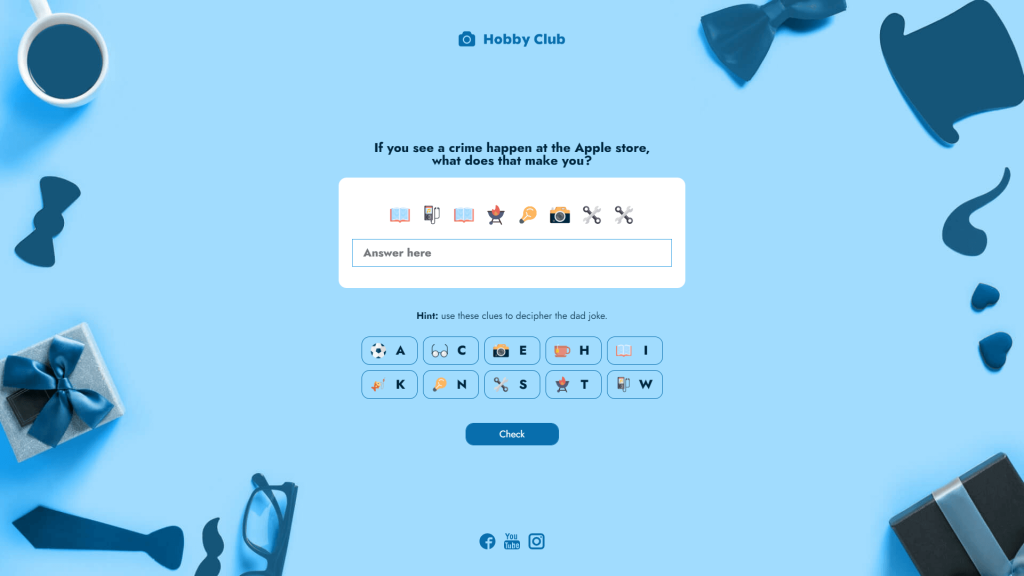
- Interactive Assessment. Create an assessment on a topic your company is an expert on. For instance, a finance service company is an expert in personal finances. They can create a Finance Interactive Assessment and help users evaluate their finance situation and give personalized feedback. Another example is an IT Assessment Test, like the one below, that can be used by software companies to provide valuable insights to potential clients.

And many more! You can practically use any type of Interactive Content. As long as you provide value, you can gate it with a short lead form and generate qualified leads.
Pro tip: Keep your lead forms short. Otherwise, you will observe high drop-off rates.
This is how to generate more qualified leads with Interactive Content:

- Use Interactive Content types with short lead forms in the beginning. By doing that, you will only get leads that are interested in what you have to offer. Examples include assessments, eBooks, and calculators.
- Use Interactive Experiences with a short lead form to reveal the result or claim the prize. Examples include Marketing Games, Interactive Quizzes, and Personality Tests.
- Always provide value so that users will get something in exchange for their contact information.
2. Differentiating your brand
In a market saturated with options, standing out is crucial. Brands face the challenge of differentiating themselves. Interactive Content offers a variety of solutions by providing unique, engaging experiences that highlight a brand’s value proposition, making differentiation natural and memorable.
With 72% of consumers feeling more connected to a brand when its story resonates emotionally, Interactive Content is your best friend in creating engaging and memorable experiences.
How to solve it?
For your B2C marketing, you can consider building:
- fun Marketing Games like this one:

- captivating Interactive Videos like this one:

- exciting Online Advent Calendars
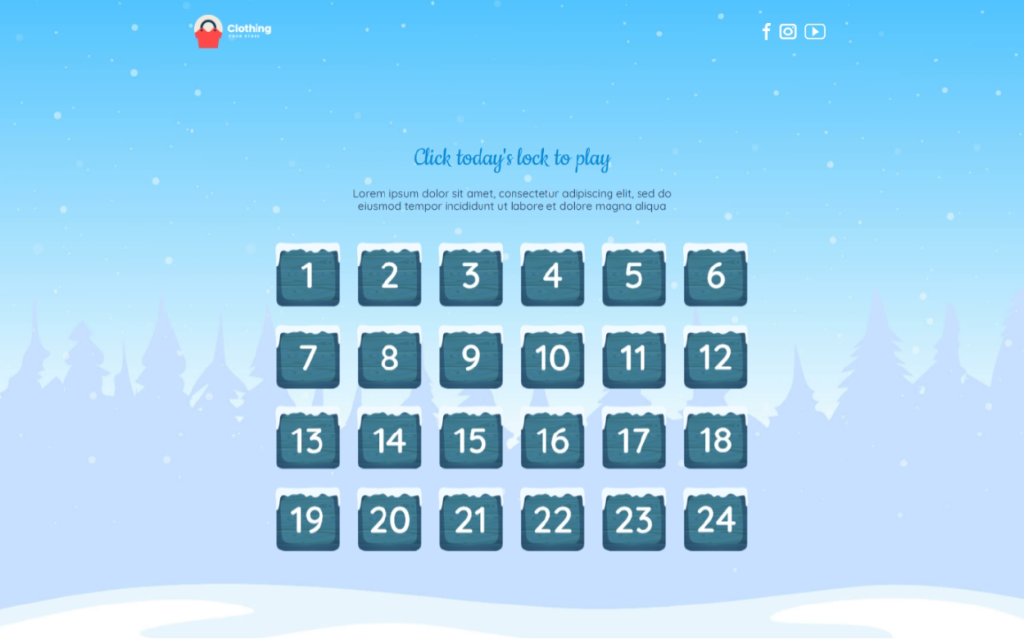
- or any other experiences to create an emotional connection with your customers, thus differentiating your brand.
And what about B2B companies?
If you are selling to other businesses, you should know that 75% of B2B buyers would appreciate online content that helps them to research business ideas, but more than 90% of brands focus their content on marketing their own products and services. To differentiate your company, you can create educational, inspirational Interactive Content, such as:
- Educational Interactive Calculators, Interactive Assessments, or Solution Builders

- Engaging Interactive Flipbooks

This is how to differentiate your brand with Interactive Content:

- Build memorable & fun experiences that leave a long-lasting impact
- Create educational content that provides your visitors with valuable insights
- Think out of the box and create Interactive Content like Marketing Games, Interactive Videos, Online Advent Calendars, and more
3. Sales and marketing alignment
Misalignment between sales and marketing can lead to missed opportunities, inefficiencies, and declining revenue. Therefore, it is no surprise that companies list sales and marketing alignment among their top priorities.
According to Aberdeen Group, companies with aligned sales and marketing report a 20% average growth.
How to solve this issue?
Interactive Content bridges this gap by creating a shared focus on content marketing, customer engagement, and lead quality. Creating marketing assets that offer deep insights into customer needs is the key to achieving this alignment.
Here are some Interactive Content types that will serve both your marketing and sales departments:
- Interactive Assessments. Interactive Assessments help offer deep insights into customer needs. Through engaging questions, they pinpoint exactly what customers are looking for, enabling marketers to generate highly qualified leads. Sales teams, in turn, receive detailed profiles, making their pitches more relevant and increasing the chances of conversion.
- Guided Selling. Guided Selling streamlines the customer’s journey towards the perfect product or solution. By asking targeted questions, they direct customers to the best options, aligning marketing efforts with sales goals. This not only improves customer satisfaction but also ensures that sales teams are equipped with insights to close deals more effectively. A B2B Product Finder like the one below can provide both marketing and sales with valuable insights about potential customers’ preferences and business needs.
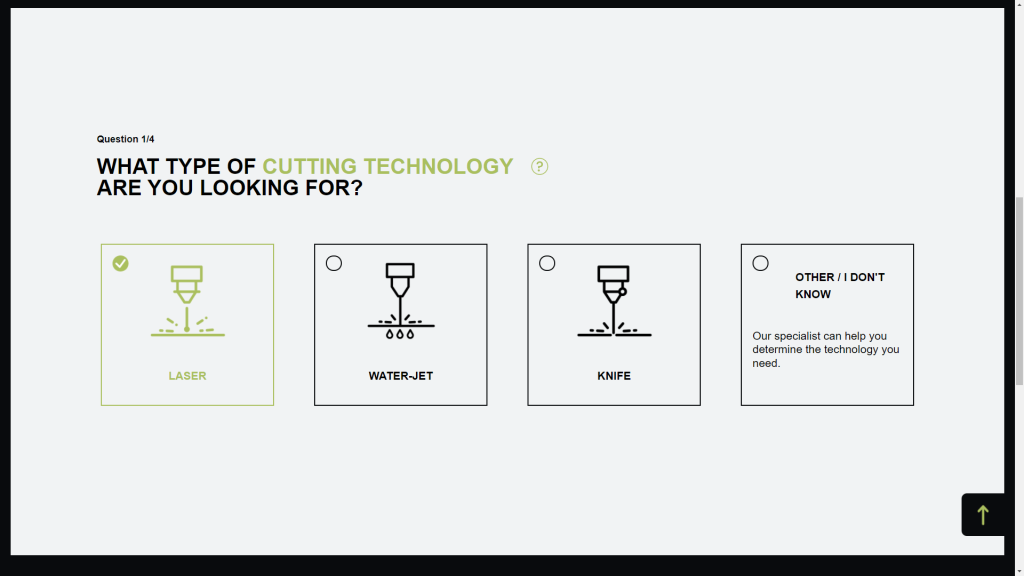
- Interactive Calculators. Interactive Calculators demystify complex pricing or benefits for customers, aligning marketing messages with sales realities. They provide instant, personalized information that helps customers make informed decisions, bridging the informational gap between marketing content and sales conversations. This immediate clarity fosters trust and accelerates the sales process.
This is how to achieve sales and marketing alignment with Interactive Content:

- Create Interactive Assessments and tailor the content to customer needs, therefore enabling marketing to generate qualified leads and sales to tailor their approach more efficetively
- Build Guided Selling experiences to provide recommendations on users responses and gather data on customer preferences
- Use Interactive Calculators to understand customer preferences and create tailored sales pitches
4 Hiring top talent
Did you know that more than 75% of recruiters struggle with attracting high-quality candidates? Attracting top talent in a competitive job market requires more than traditional recruitment strategies. You should think out of the box.
How to solve it?
Interactive Content can help you attract and select top talent. Here are a few ideas:
- Tell your story. Showcase your company culture and values in an engaging way, appealing to potential employees by offering them a glimpse into what makes your company a great place to work. For example, you can create an Interactive Video about your company.
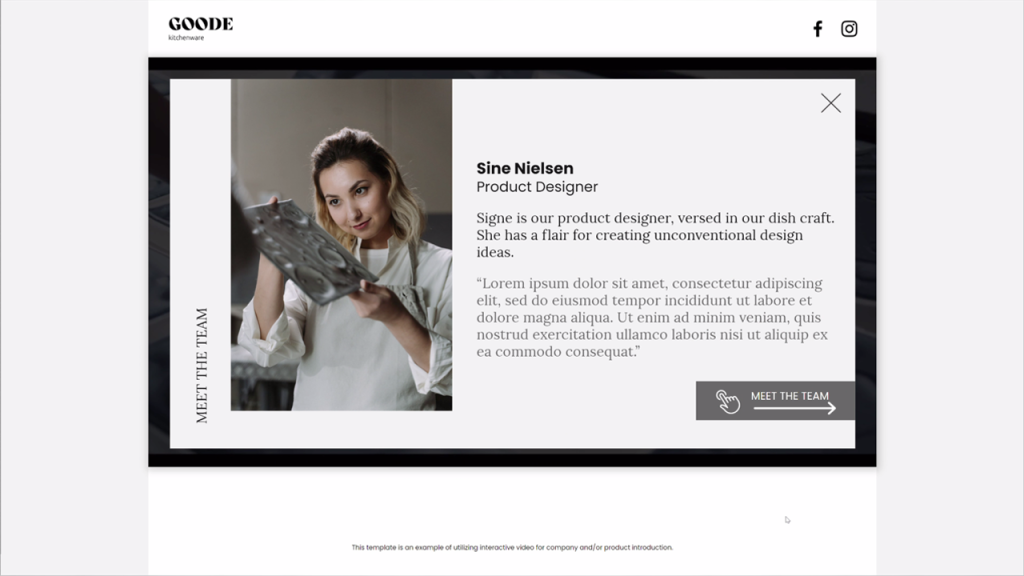
- Gamify the recruitment process. Gamification in recruitment captures candidates’ attention and engages them in a way that conventional recruitment methods cannot. Furthermore, Interactive Content helps you evaluate and spot the best candidates. For instance, you can use Interactive Assessments to evaluate and engage potential candidates.

This is how to improve your recruitment process with Interactive Content:

- Create Interactive Assessments to gamify the recruitment process and create excitement amongst applicants
- Tell your company story through different Interactive Experiences, such as Interactive Videos, Branching Videos, and Interactive Quizzes
5. Understanding customer behaviour
Understanding customer behavior is a complex challenge because it involves deciphering a wide array of actions, preferences, and interactions across different platforms.
Traditional analytics, while useful, often only scratch the surface, providing quantitative data without the qualitative insights necessary to fully understand the motives and sentiments behind customer actions. This lack of depth can make it difficult for businesses to tailor their marketing strategies effectively, as they are missing key pieces of the customer puzzle.
How to solve it?
Interactive Content does wonders in offering a more engaging way to capture and analyze customer behavior, providing businesses with the actionable insights needed to create personalized experiences that resonate with their audience.
Here is how you can use Interactive Content to understand your customers better:
- Guided Selling and Product Recommenders. The questions in these online experiences help you understand visitors better. As they answer questions about their preferences, you get deeper insights into customer behavior.

- Interactive Videos. Observe which topics your visitors click on, indicating their interests.
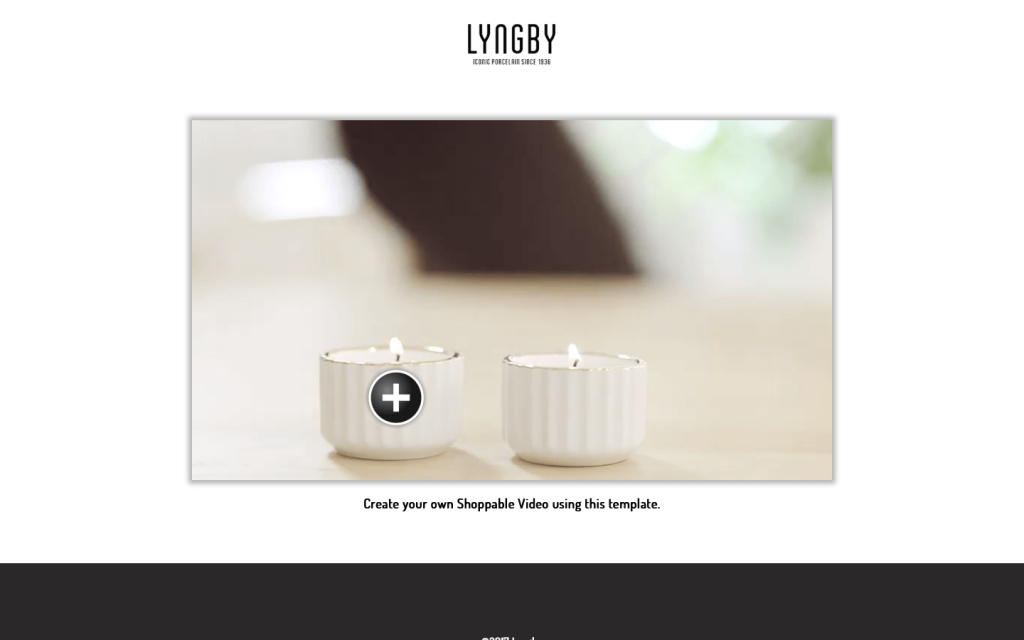
- Surveys and polls. Ask your visitors directly about their preferences, opinions, and challenges.
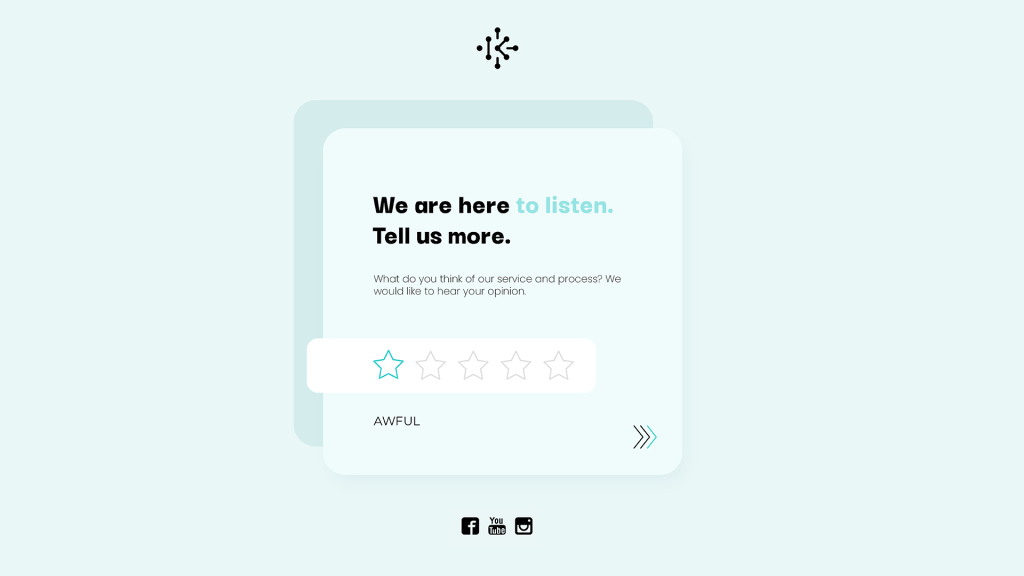
- Personality Tests. This is one of the best Interactive Experiences you can use to understand customer behavior. Personality Tests consist of questions about participants’ personality traits, so it gives you a clear picture of your customers.

In general, all types of Interactive Content allow you to observe customer behavior through default and custom KPIs within the online experience.
This is how to understand customer behaviour with Interactive Content:

- Set custom KPIs for your Interactive Experiences, enabling you to track custom actions, such as clicks on specific elements
- You can also enable tracking of individual answers, for example on your Interactive Quizzes or Personality Tests
- Use default KPIs like visitors and returning visitors to see what types of experiences your audience engages with
6. Working with budget constraints
Imagine this: You’ve got a groundbreaking marketing idea that could skyrocket your brand, but there’s a catch – your company budget doesn’t stretch far enough to bring it to life. It’s a common frustration, watching innovative ideas fall by the wayside due to financial constraints.
How to solve it?
With Interactive Content, the sky is the limit. You can bring any bold idea to life – with the right tool. Some Interactive Content platforms like Dot.vu offer a wide range of features and subscriptions to match your goals and budget.
With our free or basic subscriptions, you can create captivating Interactive Content at no or low cost. Explore our pricing and find the right plan for you.
Pro tip: Look for the ‘FREE’ icon at the bottom right corner to recognize our free templates.

This is how to create Interactive Content on a budget:

- Use Dot.vu’s free subscription to run one project with up to 300 unique monthly visitors and access to handpicked templates across +19 Interactive Content types ($0/month)
- Use Dot.vu’s Basic Lite subscription to run 2 live projects with up to 1000 unique monthly visitors and access to all templates ($200/month)
- Use Dot.vu’s Basic Plus subscription to run 3 live projects with up to 5000 unique monthly visitors and access to all templates ($400/month)
7. Increasing website traffic
Increasing website traffic is challenging because the digital space is highly competitive, with countless brands seeking to capture the attention of a finite audience. Many companies struggle with this, finding it difficult to stand out and draw visitors.
Related: 12 FREE tools to increase website traffic
How to solve it?
Interactive Content offers a solution by not only pulling in visitors but also providing engaging reasons for them to stay and engage with the site, which in turn can positively impact SEO rankings and overall visibility. This approach is effective in turning casual visitors into engaged users who spend more time on the website, contributing to traffic growth and enhanced online presence.
Here are some ideas on how to increase website traffic:
- Marketing Games. Creating Marketing Games with thrilling prizes that allow for multiple tries is a great way to attract more visitors to your website.
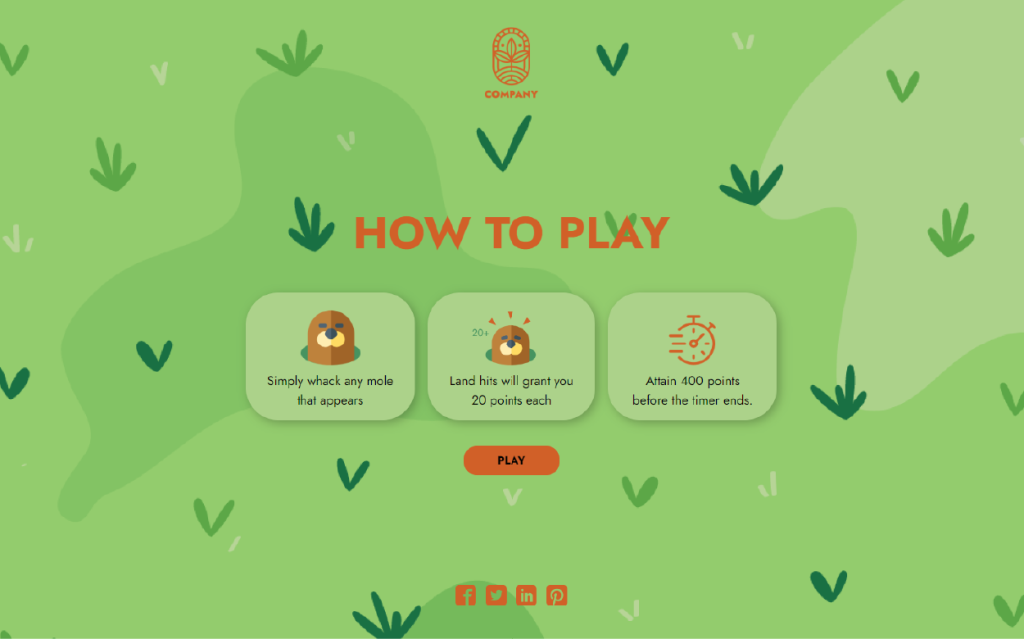
- Interactive Contests. Online contests work wonders, providing an incentive for participants to spend more time on your website.
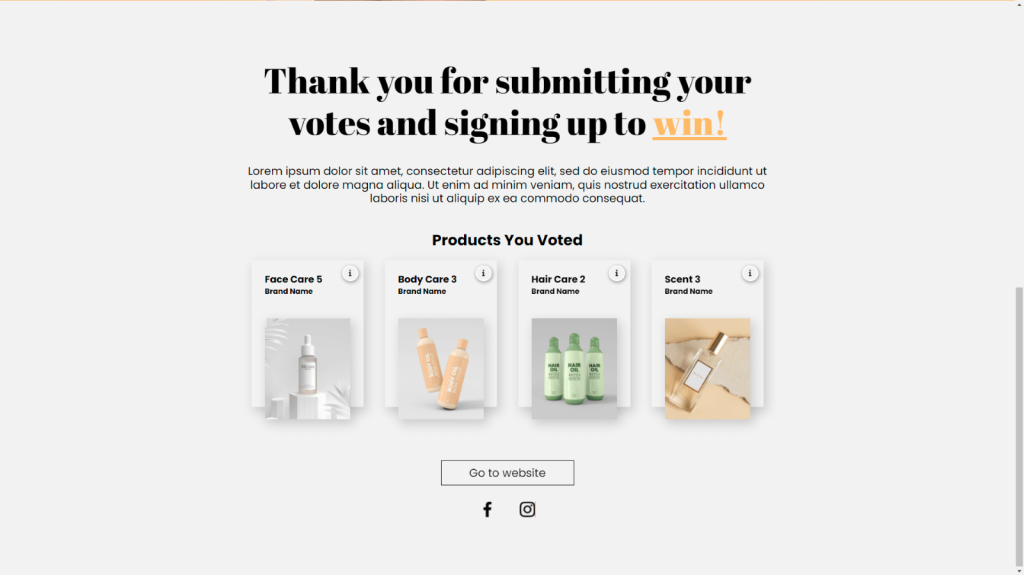
- Online Advent Calendars. Traditionally used during the holiday season, an Online Advent Calendar will attract visitors to your website 24 days in a row!
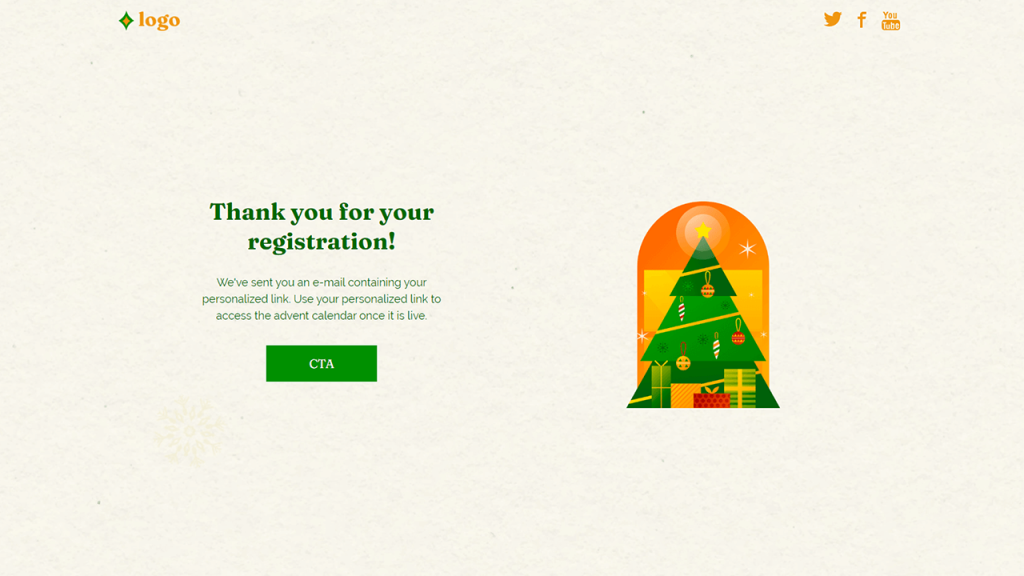
- Interactive Quizzes. Create an engaging quiz that users will want to share, thus driving more traffic to your website.

This is how to increase website traffic with Interactive Content:

- Create Interactive Experiences that offer exciting rewards and allow for multiple attempts; examples include Online Advent Calendars, Contests, and Marketing Games
- Build engaging Interactive Content that will attract social media shares, thus bringing more visitors to your website; this could be Interactive Quizzes, Marketing Games, Interactive Infographics, or Personality Tests
8. Generating brand awareness
Creating widespread brand awareness in a cluttered digital environment challenges even the most established brands. As brands are intangible, you can’t really measure brand awareness. Yet, understanding this challenge is the first step in overcoming it. By recognizing the crowded nature of digital spaces, brands can begin to explore unique methods and strategies that differentiate their presence, ensuring they not only capture but also retain consumer attention in innovative ways.
How to solve it?
With Interactive Content, you can increase brand awareness through memorable experiences. Here are a few ideas:
- Marketing Games. Create fun Marketing Games that reflect the look of your brand, or showcase your products in the visuals. By doing this, players will remember your company longer.

- Interactive, Shoppable, or Branching Videos. Enrich your products or company videos with interactive elements, encouraging viewers to engage actively. As a result, your brand will linger longer in their minds.
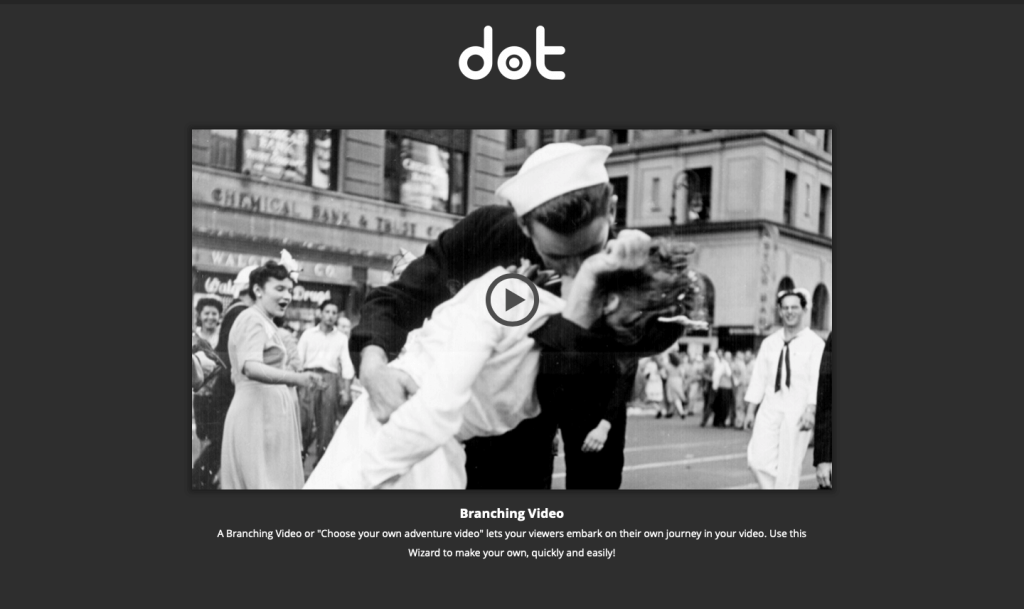
This is how to generate/ increase brand awareness with Interactive Content:

- Incorporate brand visuals in your Interactive Experiences
- Tell your brand story through your marketing content, incorporating interactivity to boost engagement and information retention
- Launch Interactive Content that encourages social sharing, thus increasing your reach
9. Educating prospects/ buyers
Educating prospects and buyers, especially about complex offerings, poses a significant challenge, often leaving them overwhelmed or disengaged. We understand the difficulty in conveying intricate product details or service benefits in a way that’s both comprehensible and engaging.
How to solve it:
With Interactive Content, you can transform dense and complex information into interactive, easy-to-digest formats that keep visitors engaged. Here are a few ideas:
- Interactive Infographics. Present complex data visually, making it easier for prospects to understand and retain information. You can use clickable elements to avoid clutter and let users click on the information they want to read more about.
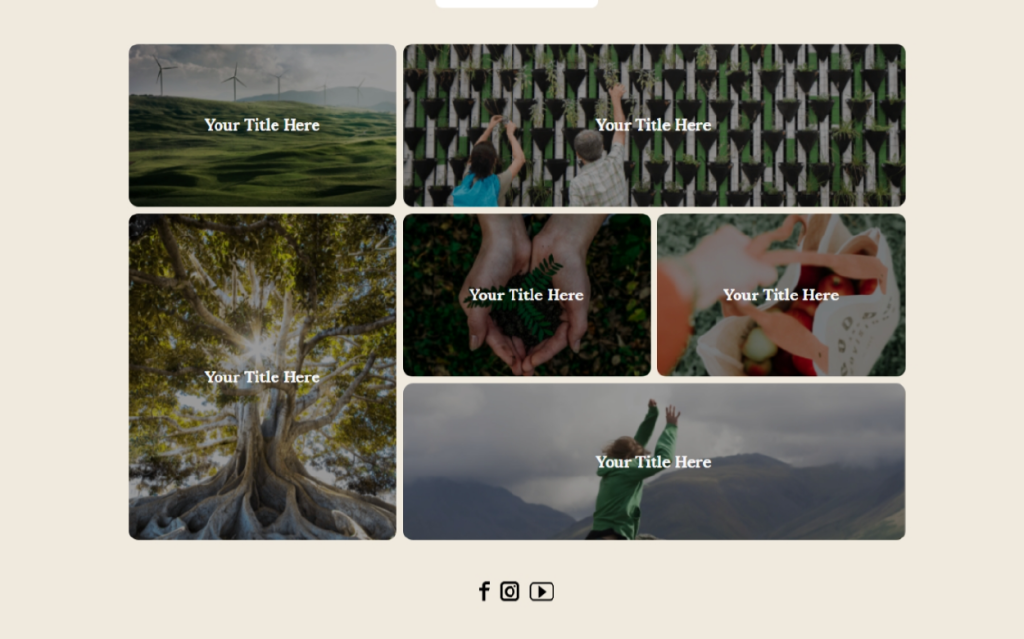
- Interactive Flipbooks. Transform traditional content into engaging, Interactive Experiences that guide prospects through educational material in an intuitive way. An Interactive Flipbook is a great way to turn learning into an engaging experience where your prospects can engage with quizzes, videos, and polls within the flipbook.

- Interactive Videos. Create dynamic video content that allows viewers to interact directly, enhancing engagement and comprehension of product features or services. An Interactive Video is more engaging than pure text with no visuals or interactive elements.
- Interactive Assessments. Offer personalized insights to prospects by allowing them to answer questions and immediately see how your products or services can solve their specific problems. In an Interactive Assessment, you can provide users with personalized feedback, helping them improve their skills or situation.
This is how to educate customers with Interactive Content:

- Turn complex information into snackable content, for example, with an Interactive Infographic
- Replace text-heavy PDFs or written manuals with Interactive Flipbooks full of engaging elements
- Use Interactive Videos to educate customers or prospects in a more engaging way
- Provide valuable feedback with Interactive Assessments or other Interactive Experiences
10. Training your marketing team
Keeping a marketing team updated with the latest trends and strategies requires continuous learning. However, traditional learning materials are often outdated or ineffective. Moreover, upgrading physical or static online training formats takes a long time.
How to solve it?
Interactive Content opens many doors for you when it comes to employee training. Not only are Interactive Experiences more engaging and effective at boosting information retention, but they are also easier to manage and update when necessary.
Here are a few ideas to get you started:
- Interactive Flipbooks. Create a stunning Interactive Flipbook to train your staff. You can add different interactive elements for ultimate engagement, such as clickable hotpots, quizzes, games, and videos.
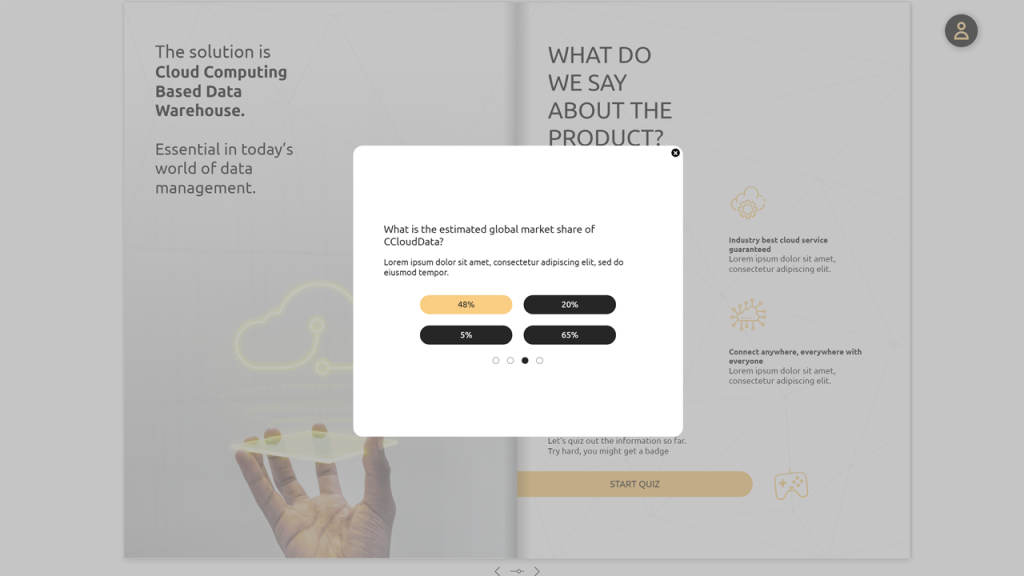
- Interactive Quizzes. Evaluate your staff’s knowledge through a fun quiz. You can even foster healthy competition by adding a leaderboard and rewarding the winners.
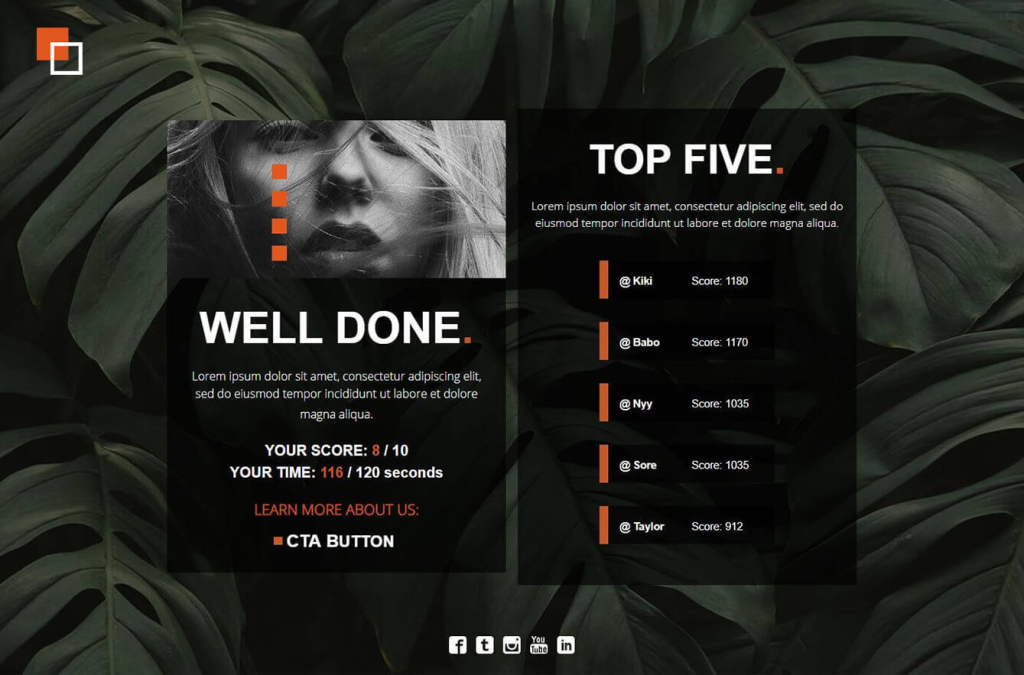
- Interactive Videos. Turn learning into a fun experience with Interactive Videos. You can add interactivity to your existing training videos to boost engagement.
11. Lack of resources
A lack of technical skills and resources can put a stop to the best marketing idea. In some companies, marketers don’t bring ideas to life because they can’t rely on a developer to help them.
How to solve it?
Most Interactive Content platforms have no-code editors that enable marketers as yourself to unfold their creativity. Dot.vu comes with more than 300 customizable templates that require no technical or coding skills, so you can start working on your idea straight away.

This is how to create Interactive Content without writing a single line of code:

- Create a free account on Dot.vu
- Explore our customizable templates and find the one that suits your goals
- Use your chosen template to create your project, simply by following the customization steps without any coding involved
12. Building a strong online presence
A solid online presence allows your company to be available 24/7, reduce operating costs, reach a larger market, and get valuable customer insights. However, many organizations struggle with establishing their websites in a digital environment.
How to solve it?
Interactive Content helps companies like yours shine online. By creating Marketing Games, Interactive Quizzes, Interactive Assessments, Interactive Calculators, and more, you attract prospects and engage visitors like never before. Here are some examples, click on any of them to explore and use them:
- “Where is the Product” game: turn your website into an exciting playground.

- “9 Days to Christmas” calendar: enables visitors to collect daily stickers and redeem special offers.
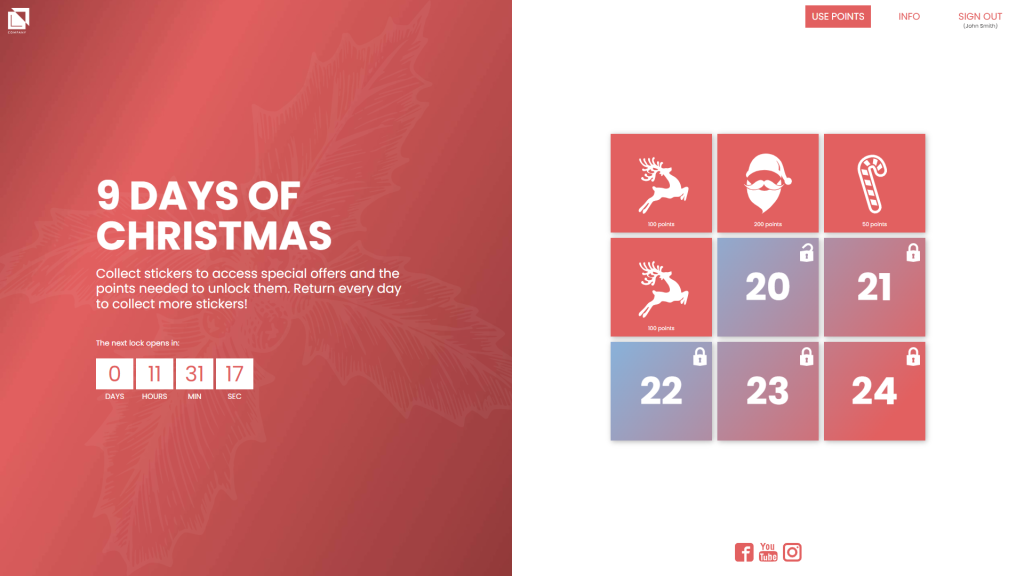
- “Drag and Drop Quiz with Rewards”: outgrow boring content and create out-of-the-box experiences that make a difference.
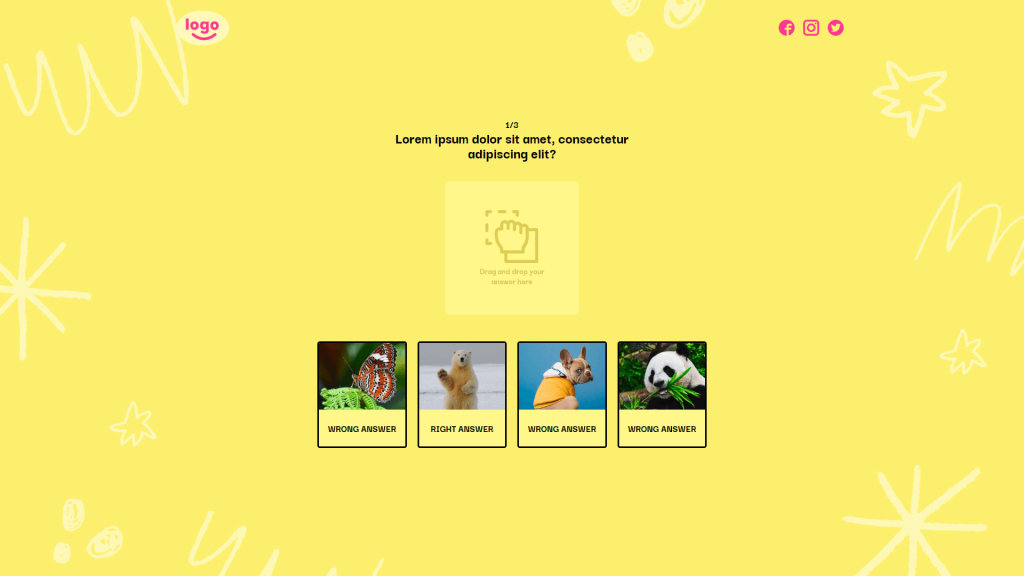
- “Black Friday Sign-up Page with Gamification”: display your Black Friday offers with style and a flair of gamification.
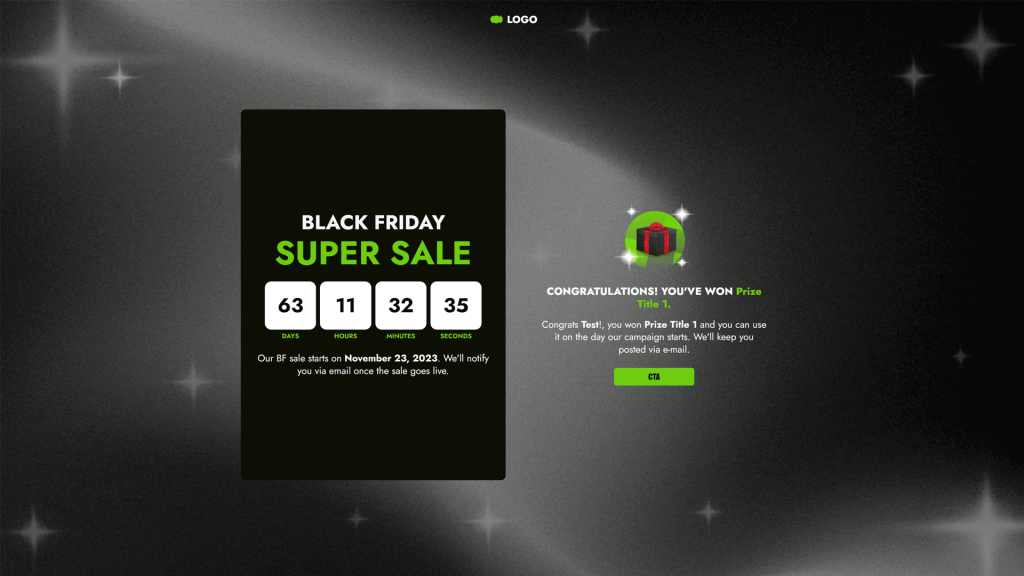
- “Corporate Savings Calculator”: Build trust and authority by enabling visitors to calculate their potential savings with your calculator.
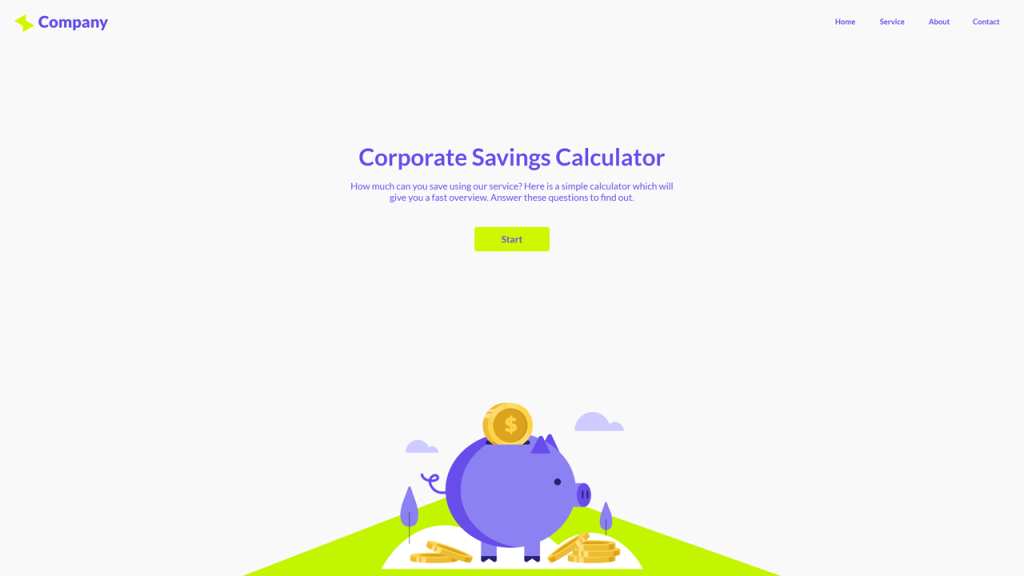
This is how to build a strong online presence with Interactive Content:

- Create stunning, easy-to-engage-with Interactive Experiences
- Launch fun Interactive Content that attracts social sharings
- Build a subscriber list by gating your Interactive Experiences
13. Collecting data and measuring results
Collecting insightful data is one of the biggest challenges faced by marketers, but it is very important. As data-driven organizations are 23 times more likely to acquire customers, 6 times as likely to retain customers, and 19 times as likely to be profitable as a result, collecting data is crucial for success.
How to outgrow it?
Among today’s rising concern around consumer data and privacy, Interactive Content steps in. Most Interactive Content platforms, like Dot.vu, enable you to collect zero- and first-party data. Here are some examples:
- Personality Tests. In a Personality Test, visitors share facts about their personalities with you. As a result, you get to collect more reliable data.
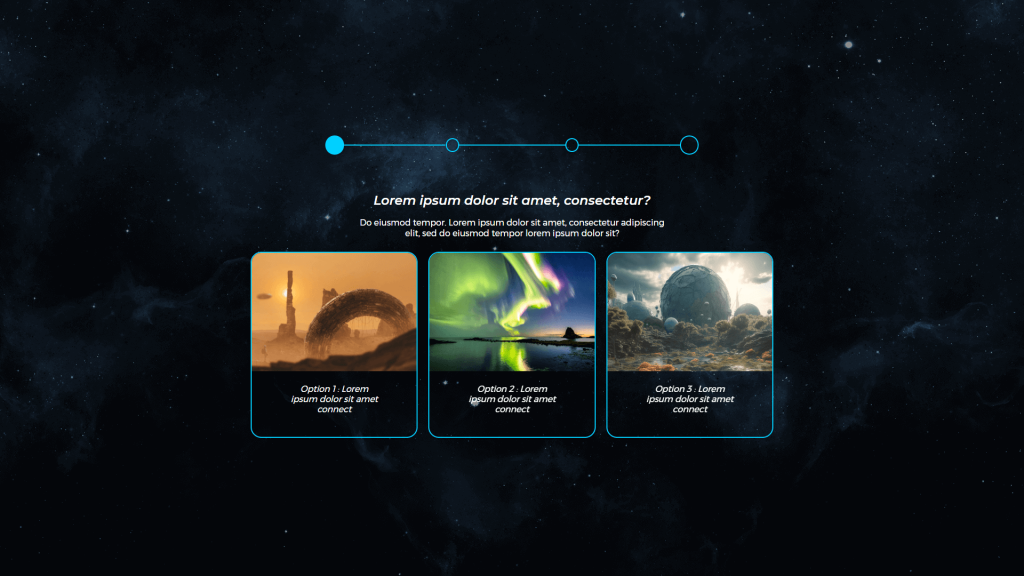
- Guided Selling and Product Recommenders. Guided Selling and Product Recommenders often resemble a quiz that asks questions about customers’ preferences, budgets, and opinions. As a result, you can collect valuable data.
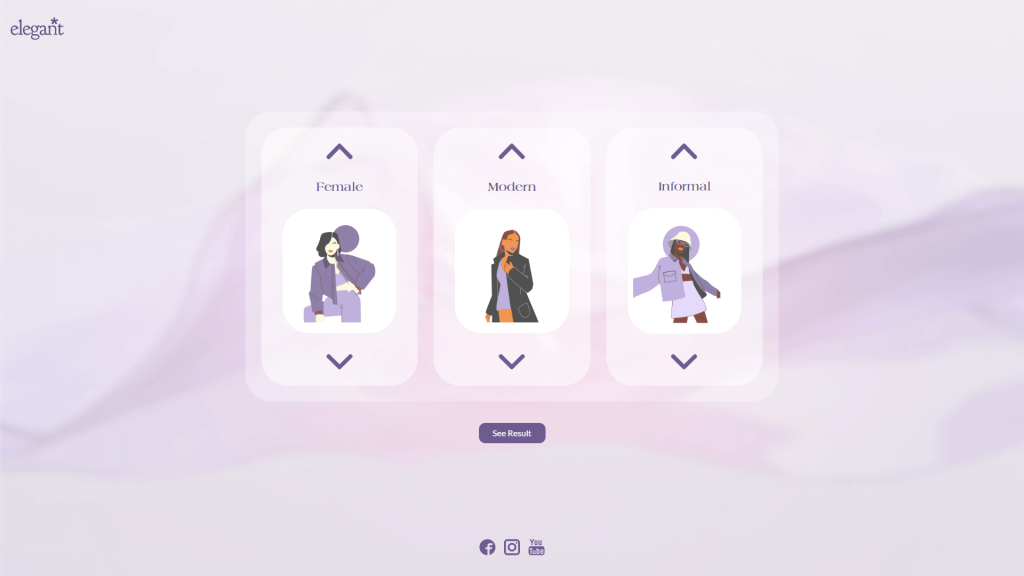
- Interactive Assessments. In an Interactive Assessment, users openly share with you their issues, pains, skills, and knowledge. Therefore, you are gathering invaluable customer data.
Pro tip: With Dot.vu, you can set custom KPIs to track any interaction within your Interactive Experience.
This is how to collect data with Interactive Content:

- Create a free account on Dot.vu
- Build an Interactive Experience using one of our customizable templates or starting with a blank canvas
- Set custom KPIs, such as clicks on specific elements, to complement the default KPIs of the project
- Monitor results by accessing your analytics
If these brands can outgrow their marketing challenges – you can too
Let’s explore some examples of companies that used Interactive Content to solve their challenges.
Color Street: creating an Online Advent Calendar in under two weeks
Color Street’s marketing team wanted to increase their engagement during the holiday season but faced a big challenge: they only had two weeks to create a project. The lack of time led them to Dot.vu, a turnkey solution with plenty of customizable calendar templates.
Using an Online Advent Calendar template, and getting some assistance from our team, the company managed to launch their Online Advent Calendar on time (and they generated over 30 000 leads!).
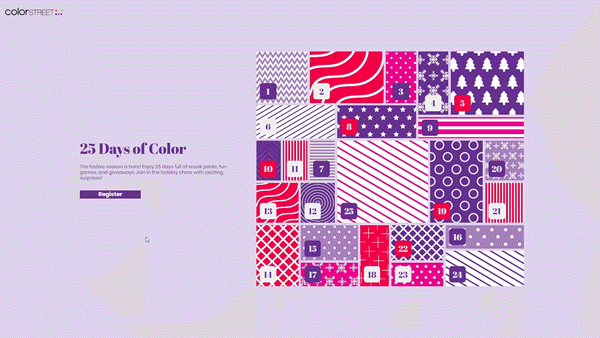
Eset: simplifying the customer journey
Eset created a Product Recommender to assist and guide their customers in finding the best-matching antivirus product for their needs. As cybersecurity is a complex topic, the Product Recommender also served as an educational tool that simplified the decision-making process. Read more about this case here.
AS Watson Singapore: launching a digital stamp collection game
AS Watson Singapore transformed traditional loyalty stamp collection into a virtual experience, thus aligning with the digital area and building a strong online presence. Click on the image to learn more about this case.
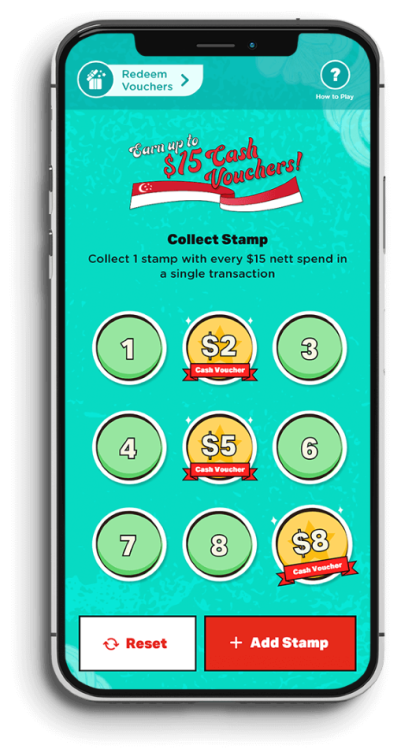
Wave goodbye to your top marketing challenges with Dot.vu
Dot.vu empowers companies across various industries to outgrow their marketing challenges, offering a suite of tools for creating engaging experiences like training materials and lead-generation magnets.
With over 300 customizable templates, Dot.vu enables the creation of diverse Interactive Experiences with minimal technical effort, yielding impressive outcomes like enhanced lead generation, increased web traffic, and valuable customer insights.
Get started on our 14-day free trial to access a multitude of templates and unlock endless possibilities for interactive marketing.
